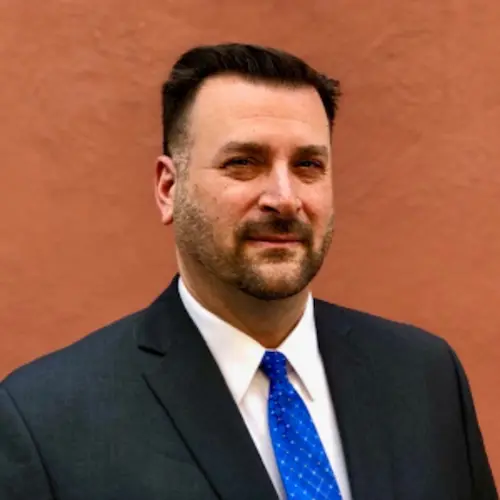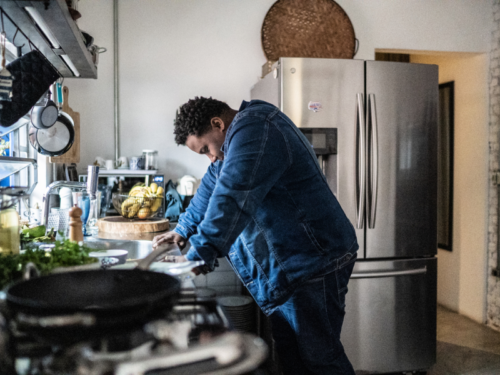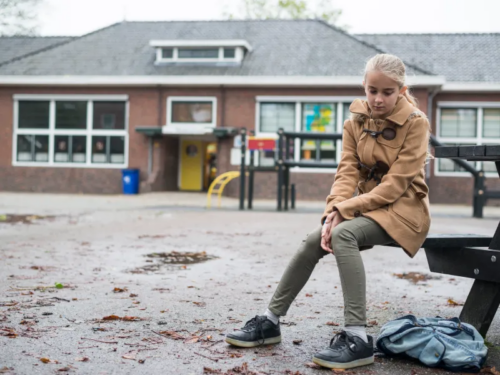
Table of Contents
What is PTSD?
Written By: Charlie Health Editorial Team

Clinically Reviewed By: Dr. Don Gasparini
Updated: September 21, 2023
7 min.
This comprehensive guide to PTSD provides information on its causes, symptoms, and treatment options.
Learn more about our Clinical Review Process
Table of Contents
Living with trauma and post-traumatic stress disorder (PTSD) can feel incredibly draining. You might feel completely fine one moment, but then in the next, you feel overwhelmed with flashbacks, disturbing thoughts, or outbursts of anger.
If left unchecked, PTSD can interfere with a person’s ability to function in daily life. If you’re living with PTSD, you might feel alone and helpless. You might have trouble connecting with friends, family members, and loved ones because it feels like nobody understands what you’ve experienced.
It’s normal to experience intense emotions after a traumatic event, and life-threatening events can send your body into a heightened state of arousal and stress. Most of the time, these reactions will subside as part of your body’s natural healing process. But if you’re still on high alert months after the traumatic event, it’s time to seek professional help.
Whether you’re navigating life after a traumatic event or managing PTSD symptoms, here’s everything you need to know about the disorder and how to start the healing process.
What is post-traumatic stress disorder?
According to the American Psychiatric Association, PTSD is a psychiatric disorder that may occur in people who have experienced or witnessed a traumatic event. Originally associated with combat, the name for this mental health condition was coined to describe the “shell shock” experienced by veterans. PTSD describes the psychological and physical symptoms that arise after any psychologically distressing experience.
Contrary to popular belief, trauma doesn’t always come from experiencing combat or other major life experiences. Sometimes, it can come from big “T” experiences, such as a natural disaster, sexual assault, car accident, or serious injury. Other times, it can stem from little “t” experiences, like fender benders, bullying, or unhealthy relationships.
Trauma is a spectrum, and everyone responds to traumatic experiences differently. Ultimately, a traumatic event is any event that exceeds our capacity to cope—and that definition can vary from person to person. In some cases, the accumulation of little “t” events can also lead to “full-blown” trauma. Trauma that is ongoing and pervasive may manifest as complex PTSD, which is a longer-term diagnosis that requires highly specialized treatment.

How common is PTSD?
PTSD can feel isolating, but you’re far from alone. According to the National Institute on Mental Health, anyone can develop PTSD at any age. This includes war veterans, adolescents, and people who have experienced sexual abuse, assault, accidents, disasters, or other serious events.
According to the National Center for PTSD, approximately seven or eight out of every 100 people experience PTSD at some point in their lives. Women are more likely to develop PTSD than men. In addition, research suggests that being from a minority group is connected with an increased risk of developing PTSD after a traumatic event due to other increased risk factors. These risk factors may include less access to mental health care or being subjected to more severe social, cultural, or systemic traumas.
Not everyone with PTSD has experienced a traumatic event. Sometimes, people can develop PTSD after a friend, family member, or loved one experiences danger. The unexpected death of a loved one can also contribute to the development of PTSD.
What are the symptoms of PTSD?
Intrusion
Avoidance behaviors
Changes in cognition or mood
Changes in arousal and reactivity
Intrusive thoughts, including nightmares, recurring memories, or flashbacks.
Trying to avoid remembering the traumatic event, talking about what happened, or acknowledging your feelings.
Feeling like you can’t remember aspects of the traumatic event and/or experiencing negative thoughts and feelings.
Feeling more irritable or constantly on-edge and having angry outbursts or reckless behavior.
People with PTSD experience disturbing thoughts and emotions related to their experience that may last long after the traumatic event has ended. They may relive the event through flashbacks or nightmares, feel sadness, fear, or anger, or withdraw from loved ones. Sometimes, people with PTSD may avoid situations, people, or places that remind them of the traumatic event.
Different people experience different symptoms, and specific PTSD symptoms can vary in severity. The symptoms of post-traumatic stress disorder fall into the following four categories:
- Intrusion: People with PTSD may experience intrusive thoughts, such as nightmares, recurring memories, or flashbacks. It might feel like you’re reliving your worst memory or watching a recording of what happened, but you can’t step in and change it.
- Avoidance: Many people with PTSD avoid reminders of the traumatic event, including people, places, activities, objects, and situations. You might try to avoid remembering the traumatic event, talking about what happened, or acknowledging your feelings.
- Alterations in cognition and mood: It might feel impossible to remember important aspects of the event. In some cases, negative thoughts and feelings can create distorted beliefs about oneself or others (i.e., “I can’t trust anyone”). You might lose interest in the things you used to enjoy, withdraw from loved ones, or have trouble feeling positive emotions.
- Alterations in arousal and reactivity: Arousal and reactive symptoms might include increased irritability, angry outbursts, reckless behavior, or hypervigilance. It might feel like you can’t relax because you have to stay on “high alert” at all times.
In the days following a traumatic event, many people will experience the symptoms mentioned above. If these symptoms persist for weeks, an individual may be diagnosed with acute stress disorder—a temporary mental health problem that can occur within the first month of a traumatic event.
When mental health symptoms don’t go away, they can evolve into PTSD. For a diagnosis of PTSD, these symptoms must last for more than one month. In addition, trauma symptoms must cause significant distress or problems in an individual’s daily life.
Join the Charlie Health Library
Get mental health updates, research, insights, and resources directly to your inbox.
You can unsubscribe anytime.
What are the best treatment options for PTSD?
Although there’s no cure for PTSD, there are multiple treatment options. It’s important to remember that different people will benefit from different PTSD treatments, and there’s no one-size-fits-all treatment for PTSD. Some components of your treatment plan might include:
Psychotherapy
Psychotherapy (talk therapy) is one of the most effective treatments for PTSD. During psychotherapy, you’ll develop healthy stress management skills so you can better handle stressful situations. Ultimately, psychotherapy can help you take charge, gain control over your trauma, and move forward.
Some types of therapy used in the treatment of PTSD include:
- Trauma-focused cognitive behavioral therapy (CBT)
Trauma-focused CBT creates a safe space to process traumatic experiences. This type of talk therapy can help you recognize problematic thought patterns that hold you back—for example, self-blame and guilt following a traumatic event. By reframing your perspective and rationalizing the problem, you can adopt an alternative mindset. - Eye movement desensitization reprocessing (EMDR) therapy
EMDR helps reduce the distressing symptoms associated with PTSD. During EMDR sessions, your therapist will help you use eye movement techniques, such as back-and-forth movements, to help your brain process traumatic memories. EMDR can help you replace negative reactions to traumatic experiences with more positive ones. - Exposure therapy
Exposure therapy, a type of behavioral therapy, helps you safely face distressing memories so you can learn effective coping skills. Exposure therapy can be especially helpful for traumatic memories and nightmares.
Medication
Depending on the severity of symptoms, your psychotherapist may recommend a combination of therapy and medication. Medication can also be helpful for individuals experiencing co-occurring mental health conditions, such as anxiety disorders and mood disorders.
Currently, only selective serotonin reuptake inhibitors (SSRIs) are FDA-approved for the treatment of PTSD, according to the American Psychological Association. While SSRIs are typically the first class of medications used in PTSD treatment, your health care provider may make exceptions based on your individual history of side effects, personal preferences, and specific mental health needs.
Outpatient treatment
When PTSD symptoms interfere with your functioning, you need additional support beyond traditional once-per-week therapy sessions. Virtual intensive outpatient programs (IOPs) can help you find emotional support, access quality PTSD treatment, and start feeling better—all from the comfort of your own home.
At Charlie Health, our innovative Intensive Outpatient Program (IOP) combines individual therapy, supported peer groups, and family therapy to create an individualized treatment plan based on your specific needs. We’ll work with you to understand your needs, choose the most effective treatment modalities, and develop aftercare strategies for sustainable healing.
Self-care
In addition to professional treatment, self-care can help you build resilience and cope with the symptoms of PTSD. It’s important to remember that self-care is not a substitute for psychotherapy, and talk therapy is often a necessary step to overcome trauma.
Some self-care strategies for coping with PTSD include:
- Practice mindfulness and relaxation techniques
When you’re feeling anxious, mindfulness can help you “ground” yourself and focus on the present moment. Yoga and meditation can help you cope with the stresses of daily life, overcome negative thoughts, and shift your perspective. - Take care of your physical health
Your physical health is just as important as your mental health. Eating a balanced diet, making time for regular physical activity, and getting enough sleep can help you feel your best. - Build a support network
No matter how lonely you might feel, you’re far from alone. Reach out to close friends, family members, and loved ones when you’re feeling down. When you have loved ones who will check on you, even when you’re avoiding them, it can make all the difference in your recovery.

Contact us
You deserve to thrive, not just survive. No matter where your trauma comes from, an Intensive Outpatient Program (IOP) can help you start processing your trauma so you can move forward and improve your quality of life.
At Charlie Health, our IOP is a comprehensive mental health treatment solution for adolescents, young adults, and their families. Whether you’re living with PTSD, complex PTSD, acute stress disorder, or any mental health challenges related to trauma, we’ll meet you where you are with professional care. Our compassionate mental health professionals will help you regain strength, learn sustainable coping strategies, and start healing. Fill out our quick survey today to learn if IOP is right for you and connect with our team.
References
https://www.psychiatry.org/patients-families/ptsd/what-is-ptsd
https://www.charliehealth.com/post/understanding-the-mental-health-impact-of-sexual-assault
https://www.charliehealth.com/post/love-is-respect-teen-dating-violence-awareness
https://www.charliehealth.com/post/complex-ptsd-vs-ptsd-whats-the-difference
https://www.ptsd.va.gov/understand/common/common_adults.asp
https://scrippsnews.com/stories/transgender-woman-shares-mental-health-care-needs/





